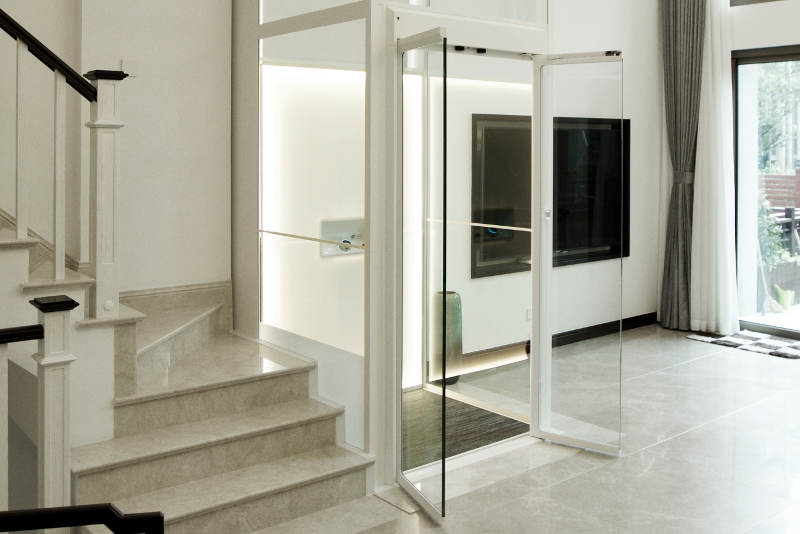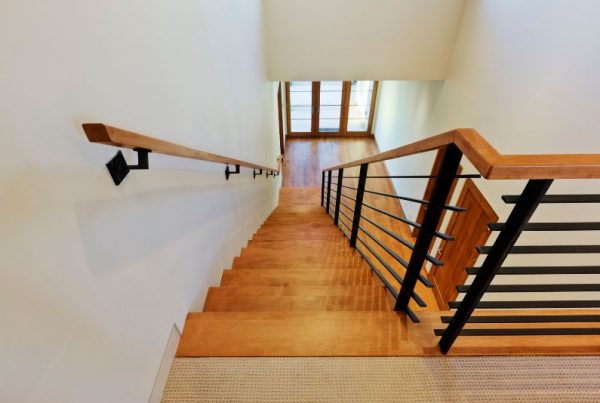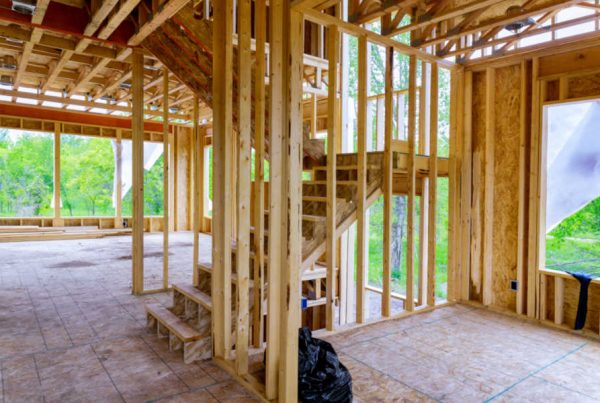
What is the difference between a home lift and a commercial lift?
Besides looking a little different, the main differences are led by the different codes that they need to comply with. For home lifts, they must comply with the AS1735.18, while commercial lifts need to comply with the DDA to ensure everyone can use them. These regulations affect things like the size, shape, height and placement of buttons.
Home lifts have a lot more allowances when it comes to design decisions. This includes keeping the buttons out of reach of small children. However, commercial lifts have to be designed in a way that is usable for all people.
A home lift requires; space for install, a phone line or sim card for the emergency phone and a permanent power supply.
Some of the most common types of residential lifts are:
Screw And Nut lift
The screw and nut lift is one of the most simple systems of elevation and is growing in popularity due to simplicity, cost, maintenance and size.
How Does A Screw and Nut Lift Work?
The main components of a screw and nut drive lift are:
- Motor
- Threaded steel bar (screw)
- Large drive nut (nut)
- Electrical supply
Screw and nut drive lifts have few mechanical components and are generally machine-room-less lifts. This adds the extra benefit of requiring minimal footprint to install a lift in your home. Because it also does not require an oil pit this means that less construction work is required, making it highly suitable for a retrofit (fitting it into an existing building).
The screw and nut drive lift works just as a nut tightens on a bolt. A motor turns the nut and the lift ascends or descends on the screw, which is a stationary threaded bar. To keep the lift lubricated the nut dips into oil at the bottom which then lubricates the threaded steel bar as it ascends.
Hydraulic Lift
A major benefit of a hydraulic lift is its lifting capacities and typically will sit in the prestige range like our Axis 18.
How Does a Hydraulic Lift Work?
The main components of a hydraulic lift are:
- The ram (piston within a cylinder)
- Oil reservoir or tank
- Pump
- Motor
- Valve
- UPS or uninterrupted power supply
When operating, the pump flows oil into the ram, which is a hydraulic cylinder with a piston inside. The pressure that builds behind the piston drives the lift platform up and to descend the valve releases the oil into the reservoir, reducing the pressure in the cylinder and the platform lowers with gravity. The UPS is the emergency power supply. In the case of a power outage or loss of power to the lift the UPS kicks in and safely lowers the platform. This system requires a machine room.
Axis Lifts
Choosing the right type of elevator for your home depends on your specific requirements and preferences. Axis Lifts is Queensland’s leading lift provider, offering a wide range of home elevators including hydraulic, traction, and screw nut home lifts.
Axis Lifts offers affordable home lift services Brisbane and Queensland wide, including affordable lift installations, servicing, and repairs. Each lift we offer is highly customisable and can be designed to seamlessly fit into your home decor. For more information on choosing the right type of home lift for your needs, call us today on 1300 002 947 or visit our residential lifts product page.



